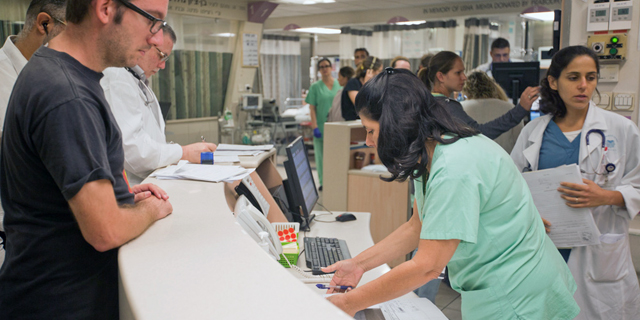
Israelis Living in Rural Areas Are Severely Disadvantaged in Terms of Healthcare, Report Says
A Thursday report published by the Israeli Ministry of Health reveals the healthcare gap between Israel’s center and its periphery just keeps growing. The country as a whole is not doing that great, either
Adrian Filut | 13:17, 27.02.20
Israelis living away from the country’s central urban hubs are severely disadvantaged when it comes to their healthcare options, according to a Thursday report published by the Israeli Ministry of Health. The report, which focuses mainly on 2017 and 2018, shows that rural residents have fewer hospital beds per capita, as well as fewer doctors and nurses. While Israel has a public healthcare system, many rural residents choose to make up for insufficient health services by buying more private insurance, the report found.
According to Moshe Bar-Siman-Tov, director-general of the health ministry, the most important conclusion of the report is that the Israeli healthcare system’s biggest problem is inequality.
According to the report, urban centers Tel Aviv and Haifa had 2.4 hospital beds per 1,000 people, while the country’s rural northern district only had 1.4 beds per 1,000 people. Israel’s southern rural district had 1.5 beds per the same number of people—mainly thanks to the opening of the Samson Assuta Ashdod University Hospital in 2017. While Israel’s center has it slightly better, those are still unimpressive statistics: on a national level, the number of hospital beds in Israel stood at 1.8 beds per 1,000 people at the end of 2018, some 40% less than the OECD average for 2017, which stood at approximately 3 beds per 1,000 people.
The report also states that the number of beds dropped between 2017 and 2018 in almost all districts, while occupancy went up. The differences are also apparent when it comes to medical staff. Israel’s rural northern and southern districts had 2.1 doctors per 1,000 people in 2017, while Tel Aviv saw 5.3 doctors per the same number of people. Haifa and Jerusalem also fared better than the country’s periphery, with 4 doctors per 1,000 people. Compared with previous years, these numbers show that the disparity keeps getting bigger. In 2012-2014, the Tel Aviv district had 4.4 doctors per 1,000 people, compared to 3 in the southern district. According to the health ministry’s report, the number of doctors per 1,000 people on a national level stood at 3.14 in 2017, a 4% increase from 2010. OECD data, however, paints a different picture. According to the organization’s 2019 health report, Israel is the only western country to see the number of doctors go down since 2000. Regardless, 3.14 per 1,000 people is still below the OECD average of 3.5. Data regarding nursing staff is similar. The number of nurses per 1,000 people in Israel dropped to 5.1 in 2017, far below the OECD average of 8.8. When split into districts, Haifa and Tel Aviv fared slightly better with 6.7 and 6.2, respectively, while the south district only had 3.3 nurses per 1,000 people and the north 4.5. The gaps extend to auxiliary medical staff such as dentists, optometrists, technicians, and community care workers, with 6.8 per 1,000 people in Tel Aviv, 5.1 in the central urban area, 4 in the rural south, and 3.5 in the north. The direct result of the worsening condition of the Israeli healthcare system is the increase in private insurance. According to a study commissioned by the ministry report’s authors, the number of Israelis who acquired some form of private insurance from their health maintenance organization jumped from 51% to 86% between 1999 and 2018. The number of private insurance policies supplied by insurance companies more than doubled in the same period: in the early 2000s, only 24% of Israelis had such a policy, and in 2018, 60% of the population did. While this phenomenon spans all population groups, only 39% of people under the poverty threshold bought private insurance in 2018, compared to 63% of those above it. There is also a gap between Jews and Arabs with an Israeli citizenship—62% compared to 53%.